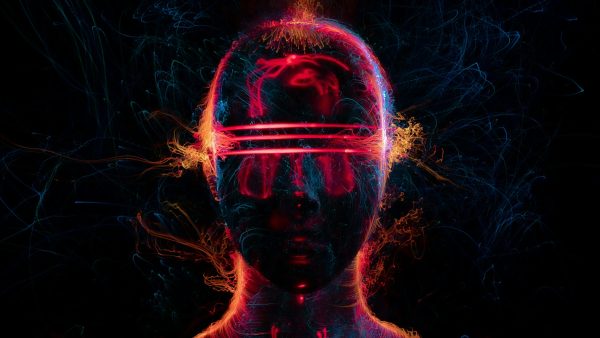Ada Lovelace and the Jacquard loom
The daughter of the poet Lord Byron and the mathematician and astronomer Anna Isabella Milbanke, also known for founding the anti-slavery and equal rights for women Ealing Grove School, Ada Lovelace was born in 1815. She was a mathematician and writer, and is considered to be the first programmer in history.
Ada was ahead of her time and was able to predict the future. For her, machines were not only used to perform calculations but also to programme themselves, to perform functions and support processes and operations in the same way that programmable mechanical looms did in the textile sector.
A very brief history of the beginnings of AI
Because of their proximity, their restlessness, their curiosity, their multidisciplinarity, their hard work and their tireless thinking, we must mention the Spaniard Ramón Llull (nicknamed Doctor Inspiratus), who in the 13th century developed mechanical logic machines to prove for himself the truth or falsehood of a postulate, and more recently Leonardo Torres Quevedo, who in 1914 published ‘Essays on Automatics’ and at the Higher School of Civil Engineering of Madrid we can see his first chess automaton from 1912.
But it was from the end of 1930 onwards that what we now know as AI began to be developed; Norbert Wiener’s cybernetics, Shannon’s information theory or Turing’s theory of computation, McCulloch and Pitts’ neural networks sowed the seed of what could be that our way of processing information could be imitated by a machine. It was at Dartmouth in 1956 and thanks to the mathematician and computer scientist John McCarthy that the term ‘artificial intelligence’ was finally defined and the field of artificial research was founded as an academic discipline. During this period, important advances were made by computer scientists and mathematicians such as Newell, Misky and Papert, by the economist and social sciences theorist Simon, but also by linguists, philosophers and psychologists such as Chomsky and pioneers in cognitive psychology such as George Armitage Miller who wrote at that time that experimental psychology, theoretical linguistics and computer simulation of cognitive processes were all pieces of a larger whole.
There is no doubt that the history of AI is a multidisciplinary history and it has continued to be so in its development and implementation.
Computers and the evolution of energy consumption
The first computer on record, the Z1, created by Konrad Zuse between 1936 and 1938, was mechanical, electrically powered and very limited. It was with the first generation of computers, with the creation of the ENIAC, that a general-purpose electronic computer was born. Its enormous size and use of vacuum valves meant it consumed around 160-200 kilowatts (kW). The second generation (1955-1964) were computers with silicon transistors and fibre optics that consumed between 10 and 20% less than the previous ones. The third generation (1964-1971) made it possible to work with integrated circuits that significantly reduced the size of the equipment and energy consumption. The fourth generation, created from 1971 with microprocessors, increased performance and energy consumption according to the Koomey rule, which indicates that, at a constant rate, the energy efficiency of computing devices improves significantly over time. This means that the amount of energy needed to perform a fixed amount of calculations is halved every 1.57 years
As happened with the development of computers, concern about environmental impact and, above all, initially, about energy consumption, has led to the creation of programmes such as Energy Star to promote the use of energy-efficient equipment.
Using artificial intelligence for a greener future
The team of researchers from the University of A Coruña, made up of Verónica Bolón-Canedo, Laura Morán-Fernández, Brais Cancela and Amparo Alonso-Betanzos, published a highly recommended article in the journal Neurocomputing in September 2024: ‘A review of green artificial intelligence: Towards a more sustainable future’.
Because of its clarity, I quote from the same article the objective of the article; ‘The article explores the emerging field of green AI and green algorithms in terms of the various approaches, methodologies and innovations that aim to make AI and ML more environmentally sustainable. It also reviews the main challenges and opportunities posed by reducing energy consumption, minimising carbon emissions and promoting ethical and responsible AI practices. Adopting these approaches not only has environmental advantages – key for the future and mandatory in the EU (at least for high-risk systems) – but also leads to cost savings and greater efficiency without compromising performance or accuracy.
To see why AI and ML models can provide us with more sustainable technological solutions, we need to review their use or why they can be considered as such:
Energy Efficiency
Thanks to the IoT and sensorisation, we are able to develop applications with the aim of reducing energy consumption and optimising energy generation with local demand. AI is able to cross-reference consumption data with other environmental circumstances and the generation of renewables to make consumption more efficient.
With the use of various types of neural networks, it is now possible to make better predictions of electromagnetic energy from the sun to obtain electrical energy or to calculate wind speed for the use of wind turbines. In this way, it is possible to predict the use of renewable energy sources efficiently and to achieve smart cities and buildings to optimise the use of heating, hot water, ventilation, air conditioning and lighting.
Large energy consumers such as large data centres are directing their energy strategies towards these more efficient and profitable models.
Smart Mobility
According to the United Nations, 55% of the population currently lives in cities and it predicts that this will rise to 68% by 2050. In absolute terms of population, 6,790 of the 9,700 million people who will inhabit the planet will do so living in overcrowded cities.
Traffic control and the use of apps make it possible to predict and suggest the best routes to get from one place to another. We have been using browsers that make use of these AI resources for some time now.
Prediction models are optimal when they have quality information, and the 5G networks that Telefónica has allow us to provide solutions based on reliable data, both for smart cities and for tourism, mobility and transport.
In the future, thanks to the development of autonomous vehicles, we will see safer driving and a reduction in accidents, as well as machine learning models that help minimise energy consumption. Autonomous vehicles will change the way we understand mobility, together with shared transport solutions.
Sustainable agriculture
Thanks to biotechnology, but also to sensorisation and the use of GPS that enable precision agriculture, to the use of drones and to the advancement of other forms of production such as vertical farming, technology companies are able to offer applications so that farms can change the way they work to make them more efficient. All the data generated can be processed with machine learning algorithms, making it possible to be more precise with the amounts of water, fertilisers or pesticides used, or with image processing that allows different textures of the land to be defined and evaluated.
The use of autonomous tractors and robotic harvesters, and the use of quantum machine learning (QML) for mechanisation and disease detection are making field work increasingly efficient.
Climate change
With the aim of achieving low-carbon energy, AI and more efficient algorithms are being used to make more reliable predictions about electricity production through renewable energies, both solar and wind, and therefore to adjust production to energy demand so that the percentage of renewables is higher.
It has also been possible to mitigate methane leaks in natural gas pipelines and compressor stations, based on the use of convolutional neural networks trained with images of methane leaks.
Environmental policies
The use of AI to design environmental policies has been a transformative approach to improving the sustainability of various sectors thanks to the use of machine learning algorithms that make it possible to identify patterns and trends and predict possible outcomes.
Evolution of resource use with new technologies
As happened with the evolution of the energy consumption of the first computers, optimising the use of technology is the natural evolution to make both its use and the business itself more sustainable.
There is a confrontation between a red AI that does not consider limits in the use of computational resources and a green AI that seeks to limit them. It has been studied and seen that until now, precision had been prioritised over efficiency, training large volumes of data and doubling computational needs every 3.4 months since 2012. This trend has reached a turning point with the emergence of new models such as Deepseek’s R1.
The trend in this respect is the use of efficient algorithms that require less computing power and therefore optimise the use of hardware. Efficient architectures and model compression techniques and efficient learning, which also allow models to run on less hardware and less energy.
Edge computing is also a key strategy for making efficient use of resources, bringing the place where data is produced closer to where it is used. Telefónica is aware that this technology makes both communications resources and computing resources in DPCs or the cloud more sustainable.
Conclusion
In the digital transformation we must think about the possibilities that technology gives us beyond its initial use, as Ada Lovelace did with the Jacquard loom, we have to make efficient use of resources as was done with the evolution of energy consumption in computing, work with a multidisciplinary team as was done from the beginnings of AI to see the different points of view.
Incorporating new technologies such as AI or machine learning models not only in large companies, but also in SMEs, will make them more profitable and efficient.
Thanks to artificial intelligence, machine learning models and quantum machine learning, we have the opportunity to develop new applications and to do so from a technical, ethical and sustainable point of view. It is important that when a company considers incorporating new technologies, they do so with the support of technology companies that know how to provide these types of services, which in some cases, such as artificial intelligence, even involve having a specific governance model.











